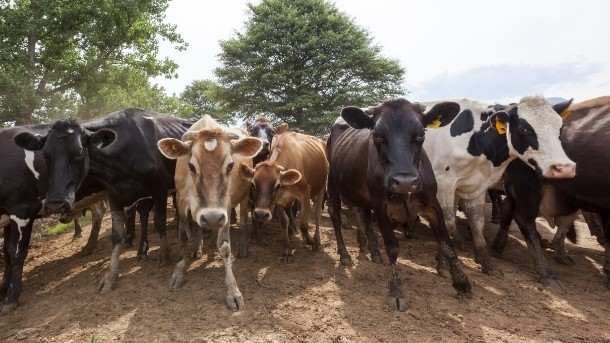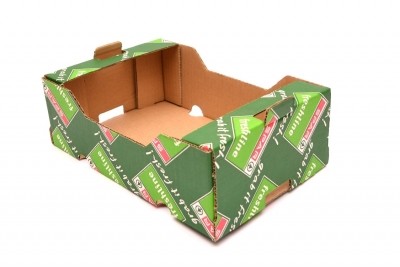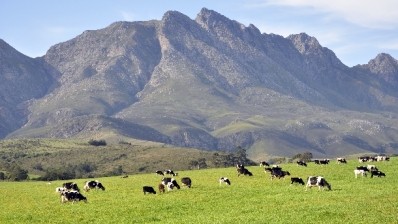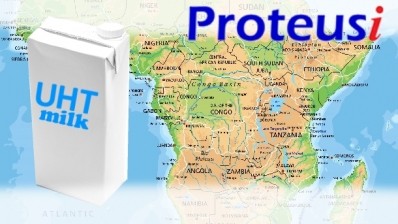Demand for dairy products drops in South Africa

The address, by Alwyn P Kraamwinkel, took place at SAMPRO’s general meeting on July 27, and looked at key market signals for the dairy industry in the country.
Kraamwinkel noted, according to the FAO, there have been three major decreases of the price index for dairy products in the past decade, all of which were followed by increases.
The downward trends of dairy product prices internationally were the result of supply in the world outstripping demand, he said.
The downward trends were triggered by high production levels, and the trends continued due to weaker demand and continuous high production.
The upward trend in the FAO price index, Kraamwinkel said, has been fueled by lower production in the two biggest suppliers of dairy products to the international market, the EU and New Zealand.
He said there is uncertainty regarding the development of the international supply and demand of dairy products in the coming months, making predictions on prices difficult.
South African industry
In South Africa, the mass of exports in 2016 was 18% lower than in 2015 and the fourth highest in the 15 years from 2002 to 2016.
The mass of imports in 2016 was 16.3% lower than the record high imports in 2015, however, it was still the third highest in the 15 years from 2002 to 2016.
South Africa was, in terms of mass, a net exporter of two and a net importer of four of the six types of dairy products as was the case in five of the previous eight years.
Six types of South African dairy products:
Milk and cream, unsweetened
Milk, concentrated
Buttermilk powder, yogurt
Whey, whey powder
Butter, butter spreads and butter oil
Cheese and curd
More imports expected
According to the estimated figures for 2017, the mass of export will be 6% lower than in 2016 and 23% lower than in 2015; the mass of import will be 41.1% higher than in 2016 and 18% higher than in 2015, which was the highest in the years 2002 to 2016.
South Africa will be, in terms of mass, a net exporter of two of the six dairy products (buttermilk and yogurt, and whey), while for the second time since 2007, it will be a net importer of milk and cream.
Imports of milk and cream and buttermilk and yogurt will be at record high levels.
The mass of the production of raw milk in South Africa in 2015 was 6.37% higher than in 2014, which is the highest year on year increase since Milk SA started to record raw milk purchases in 2006.
The unprecedented high production in 2015 in South Africa, Kraamwinkel said, was the result of the favorable relationship between the prices of raw milk and feed for dairy animals, as well as favorable weather conditions during the first part of 2015.
The price relationship weakened considerably in the second half of 2015 (due to a sharp decrease in the prices of raw milk and increased feed prices), and together with the drought, especially in the summer rainfall region, resulted in significant downward pressure on the production of raw milk and dairy products in South Africa.
The estimated production of raw milk in January to June 2017 is 8.6% higher than in the same months of 2014; 3.27% lower than in the same months of 2015; and 0.21% higher than in the same months of 2016.
Retail sales
Retail market products:
Fresh milk
Long life (UHT) milk
Flavored milk
Yogurt
Maas (fermented milk)
Pre-packaged cheese
Cream cheese
Butter
Cream
The quantities of retail sales in South Africa of six of the nine dairy products of which the performance in the retail market is monitored, in the year up to March 2017 were lower than in the previous year.
The retail sales quantities of six of the nine dairy products were lower in March 2017 than in March 2016.
The retail sales quantities of six of the nine dairy products were lower in the nine months ending in March 2017.
These reductions in the quantities of retail sales are very unusual, Kraamwinkel said.
The retail sales price of each of the nine dairy products increased from March 2016 to March 2017, and the price increase of each of the nine dairy products was higher than the inflation rate, which is unusual, he said.
From February 2017 to March 2017, the retail prices of five of the nine dairy products declined.
Downward pressure on demand
The lower retail sales quantities and the movements of the retail prices of the dairy products signal strong downward pressure on the demand for dairy products in South Africa.
This downward pressure is the result of the impact of poor economic growth in South Africa and the sharp increases in the retail prices in 2016 against the background of the decreases of retail prices of dairy products in 2015.
However, Kraamwinkel said, the trend is not limited to dairy products, as it is also seen in other food products including instant cereals, rice, maize meal, margarine, tea and juice.
Kraamwinkel’s outlook for the remainder of 2017 was that it should be approached with great caution, with continuous assessment to ensure supply of dairy products and raw milk follows demand.
Some of the variables can change quickly and the changes cannot be predicted accurately, he concluded.







